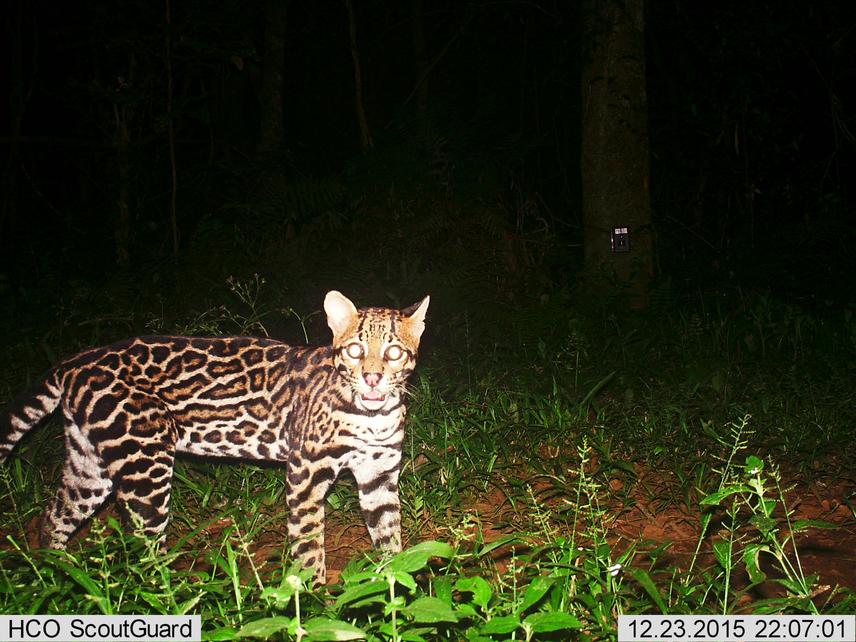María Paula Cruz
This project aims to determine how habitat and landscape transformations and niche overlap affect the distribution and abundance of the small- medium felids of the Atlantic Forest of Argentina

Leopardus pardalis.
The accelerated loss and fragmentation of the Atlantic Forest (one of the world's most endangered ecoregions) combined with scarce literature about the ecology of the small-medium neotropical cats, ocelot (Leopardus pardalis), jaguarundi (Puma yagouaroundi), margay (Leopardus wiedii) and oncilla (Leopardus tigrinus), have limited our understanding of the ecology of these species and prevented us from assessing their conservation status and developing conservation actions. Some authors suggest that the medium-bodied ocelot could negatively affect the activity patterns and abundance of the three small cats due to interference competition. Human alterations of the landscape may affect these intra-guild relationships, shifting the balance of the competitive regime and affecting the conservation status of some of the species.
The first aim of this project is to study the distribution of the medium and small cats of the Atlantic Forest (AF) of Argentina, and develop habitat-suitability models to assess their habitat requirements. This information on how these small cats exist relative to these varying landscape conditions and understanding how habitat loss affects their populations and basic ecology will allow us to develop species appropriate conservation and management plans.
The second aim of this project is to estimate the abundance of these cats, in order to assess the existence of intra-guild competition. The small cats may not only be affected by the direct effects of anthropogenic changes in the landscape but, indirectly, by changes in the intra-guild competitive regimes that result from differential responses of some cat species to anthropic disturbance. The ocelot is very sensitive to anthropogenic disturbances. At the same time, this felid seems to exert a strong competitive effect on the small cats. Thus, it is expected that in moderately fragmented and disturbed sites, where the ocelot is less abundant, the small cats may be relatively more abundant. Finally, in order to understand the mechanisms of coexistence among these cats, we will compare the habitat use and daily activity patterns of each species.
We will use camera-traps to record the medium and small felids in the AF of Argentina. In order to survey the whole range of habitat variability, we will place camera-traps in each major habitat type: protected native forest, monoculture pine plantations, and agro-ecosystems. We will use GLM, ENFA, MAXENT and occupancy modelling to determine how habitat and landscape transformations and niche overlap affect the distribution and abundance of this small- medium felids.